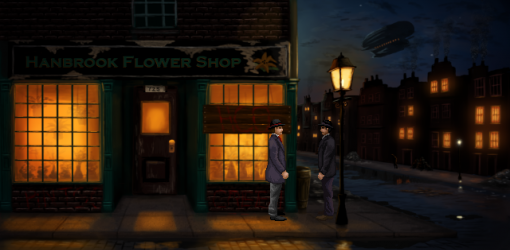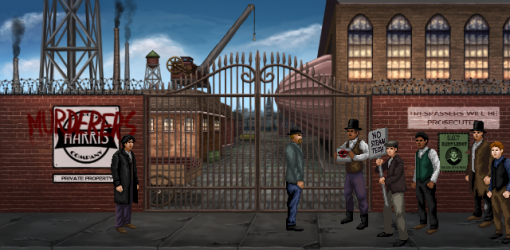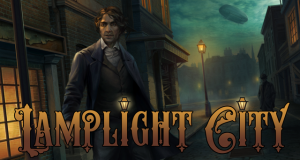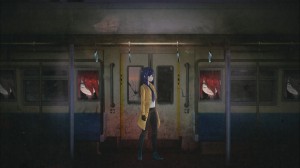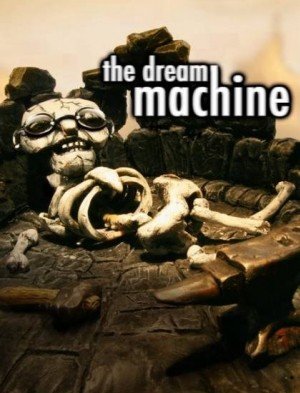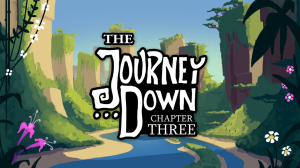Lamplight City hands-on archived preview
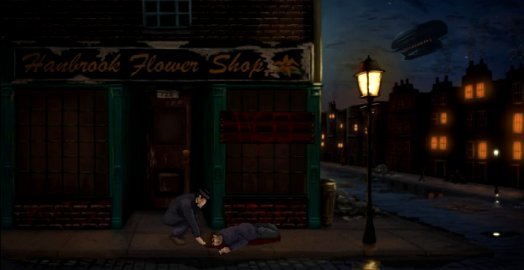
I was fortunate enough to have the chance to play a preview copy of the upcoming Lamplight City by Francisco Gonzalez, creator of previous tales like A Golden Wake and Shardlight with Wadjet Eye. Gonzalez, publishing this time under his own Grundislav Games label, positions this retro-styled 2D point-and-click game with the unique elevator pitch of “a detective game where it’s okay to fail.” I was intrigued. Since most people – and I definitely include myself in this category – aren’t on the intellectual plane of Sherlock Holmes or Hercule Poirot, I wondered if that meant the mysteries would be obvious or if I’d have to pay extra special attention to what was going on in true detective style. Interestingly, the answer is neither, at least in the part I got to sample.
Lamplight City is set in an alternative Victorian era timeline. It takes place in 1844 in the city of New Bretagne, which has more than a passing similarity to New Orleans as represented in Jane Jensen’s Sins of the Fathers. In fact, much of this game seems inspired by the first Gabriel Knight. The map screen for moving from place to place looks very familiar. Dialogs with other characters switch to black screens with detailed, animated portraits and a list of topics to talk about with whomever you’re interviewing. The protagonist wears a long, dark jacket like Gabriel Knight – which is actually joked about in the game. Locations you visit can also be reminiscent of GK, such as the local coffee shop. You even get to ask people what they know about voodoo in a few places.
All this is done rather tongue-in-cheek and is clearly an homage to the Sierra fan favorite, especially as the actual content of the game differs significantly (there’ll be no Schattenjägering here). While Gabriel Knight is clearly the biggest influence on Lamplight City, other subtle nods to golden age classics such as Loom as well as some more recent games like the Blackwell series can also be found.
Visually, the pixel art is what we’ve come to expect from Grundislav. Every scene and character is beautifully and vibrantly drawn, and the animated dialog portraits are wonderfully detailed. In fact, the game steps up the resolution from the studio’s previous 320x200-esque artwork to 640x480 (or its widescreen equivalent). The increased resolution allows for finer detail while still retaining that classic retro look when viewed on today’s larger screens.
In my travels I visited the run-down areas of New Bretagne at night, which was suitably creepy. I made a trip out to the quiet but melancholic cemetery with its many aboveground mausoleums. And I dropped into residences both opulent and humble as I hobnobbed with the different classes of society. Each location is quite distinct and filled with enough background detail to make them feel real without becoming a cluttered mess. I had no difficulty in determining what areas of the screen could be interacted with, even without having to run the mouse over them to get a pop-up labelling what they were.
The detail isn’t just present when the game is standing still either. All of the characters move fluidly and their range of animation is greater than in many larger scale productions seen in recent years. Whether it’s people climbing through windows, getting into fist fights (don’t worry, you don’t control the fighting), or dead bodies falling out of unexpected places, they’re all smooth and believable. I don’t want to know what was used as reference for the latter.
The story of Lamplight City centers around two detectives, initially working for the New Bretagne police. You control Miles Fordham, the more diligent and serious of the pair. Your partner is Bill Leger, who tags along and offers up the occasional insight, especially when it comes to the city’s societal divisions.
Bill hails from Cholmondeley (pronounced Chumley), a lower class neighborhood colloquially known as “the Chum” that everyone seems to be trying to get out of. In the section that I played, it wasn’t mentioned where Miles came from, but the implication seems to be that he is of higher birth. Apart from the class distinctions between rich and poor, society is also fractured by race and sexual orientation. While the game doesn’t focus on these particular aspects for now, they are always present as an underlying tension and possible motivations for people to commit crimes. In this alternate Victorian world, there is also the increasing pressure of “steamtech”, with modern machines displacing people from their jobs. Although the game is set in the 1800s, it resonates well with issues cropping up frequently in present day news headlines.
Miles and Bill are a crack investigative team as the adventure opens. They’ve been summoned to a flower shop in the Chum where for several weeks a thief of sorts has mysteriously been entering and stealing flowers even though the proprietor swears the store has been securely locked. I say “of sorts” because the thief is considerate enough to leave behind payment for the flowers taken. This scenario serves as a sort of mini-case that introduces the different elements of the interface as well as setting up the larger overarching story for the rest of the game.
Without spoiling anything, this initial investigation does not quite go according to plan. After things fall off the rails, the game fades to black and rejoins Miles and Bill three months later. No longer on the police force, Miles and Bill’s fortunes have taken a turn for the worse – Bill’s in particular, but even Miles is taking nightly soporifics to help him sleep, while also dulling his abilities. Fortunately, a new case is sent their way by an associate still working for the police force. An upper class woman apparently died but the mourners were in for a shock at the funeral when she came to life again and began banging on the coffin. The police presume foul play and have a suspect in custody, but only on the flimsiest of evidence. It’s up to Miles and Bill to investigate to determine who the real culprit is.
Accompanying the press demo was a link to a key blog post about the game’s development. Fair warning, the article does contain a few early game spoilers, which I shall not repeat here. The key takeaway, however, is that this adventure was set up, in theory, to place the onus of solving crimes on the player. The full game will comprise five different cases, with decisions you make early on impacting your later investigations. I was a little apprehensive about how difficult the cases would prove to be. In other storytelling mediums – novels, television shows, movies – we marvel at the detectives who have those brilliant moments of insight that allow them to crack cases and put all the conundrums to rest. It’s hard to replicate that in a game, which is why many mystery adventures take players along an overall linear course that leads them to the right answer whether they’ve made the intuitive jump to get there or not.
The preview only featured the introduction and first case, so I can’t speak for the entirety of the game. However, within the initial main case it’s quite easy to figure out who the real criminal is, as one of the first things they do when you meet them is to confess to the crime. Even so, through your investigation it’s possible to discover the means and motive for another character as well, giving you the option to choose which of the two suspects to accuse. My sense of potentially blowing this decision wasn’t that I might misinterpret evidence and accuse the wrong person while thinking I’d solved the case correctly, but rather that if I really wanted to, I could choose to knowingly accuse the wrong person. A curious approach to the concept of failure indeed. That said, I would assume that the actual criminal doesn’t just confess in every case and that, hopefully, the cases become more challenging as the game progresses.
With the limited scope of what I experienced, I also wasn’t really able to judge the “reactive world” being promised. There were a few places where I could make choices on how to proceed, which mostly just altered one or two lines of dialog, or in a couple of instances removed locations from the map where characters no longer welcomed my presence. Perhaps such choices have more lasting effect later on, but even in solving the first case my decisions didn’t seem to really register. I first named the correct suspect and then reloaded and wrongfully accused another. Miles and Bill had no problem pointing the finger at someone else… using exactly the same lines as when I chose the right criminal. It remains to be seen if the full game will deliver more in its handling of both unintended failure and the consequences of choices.
Decision points aside, the rest of your investigation consists primarily of talking to suspects. Occasionally conversation choices are presented as dialog options at the bottom of the screen. However, most of the time you switch to the detailed character portraits and are given a list of topics to choose from. Subjects are removed from the list once you’ve used them. Every now and then a topic will unlock a new location or add an important detail to your notebook, which is accessed by right-clicking or through a button on a hidden menu bar that displays when you move the mouse to the top of the screen.
This is a dialog-heavy game, and those who appreciate such experiences will enjoy the character and world building that’s nicely woven into the conversations as background detail. With so much dialog, I’d have appreciated the opportunity to save between options, but being able to play a game that otherwise allows free saves anywhere is quite refreshing at a time when more and more adventures are moving towards single-slot checkpoint saves. Besides, it’s easy to leave a conversation between dialog options in order to save before speaking to the suspect again to continue. After all, real life does sometimes intrude on playing games.
Lamplight City eschews inventory puzzles and in fact does not give you access to an inventory at all. You can pick up some items in your investigation but once you have, Miles will automatically use them if appropriate when you click on a relevant hotspot. For example, during the tutorial section you have to determine if a window at the flower shop could have been unlatched from the outside. A hanger from the store is needed to conduct an experiment, which Miles uses without prompting when you click on the window in question. On occasions such as this, you are then typically taken to a close-up view of what you’re interacting with to do more direct manipulation. In this particular instance, you have to carefully drag the hanger around the edges of the window to see if you can unlatch it. Throughout the first case I encountered a small handful of these sequences, which form the only interactions you have other than talking to characters and traveling from place to place.
When interrogating suspects, even the bit characters are all fully voiced, with acting that ranges from acceptable to quite good and nobody delivering a poor performance. I found the interplay between straight-laced Miles and rough-around-the-edges Bill to be especially enjoyable. An attentive ear will pick out some Wadjet Eye voice regulars, which is unsurprising given the developers’ past association.
The rest of the soundscape is filled with other nice touches. Footfall varies with the surface being walked on, such as concrete, wood, or carpet. Birds chirp and pedestrian traffic can be heard in outdoor scenes, while the walla of a crowd can be heard in the coffee shop. The musical score also pleasantly accompanies the investigation, feeling classical but with just a bit of an edge to match the more steampunk elements that have been introduced.
The demo clocked in at half an hour for the intro and three hours for the first case proper. If that’s representative of what to expect throughout, then the full five cases should provide a quite substantial play time indeed. While the lengthy dialogs I encountered did grow a little tiresome, the lush artwork, intriguing world of New Bretagne, and promise of a sizable adventure have definitely caught my interest. In particular I’m looking forward to seeing more fully how the promise of a game where it’s fine to fail and where the world reacts to my decisions plays out, as it’s still too early to tell after just one case. The investigating I’ve done so far has been suitably intriguing, and I'm anxious to see how each of the different cases ultimately ties into the overarching plot that is only thinly hinted here. Fortunately, there isn’t too much longer to wait, as Lamplight City is currently on track for an August release.


